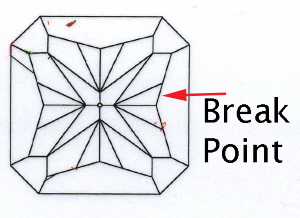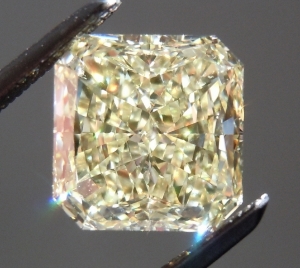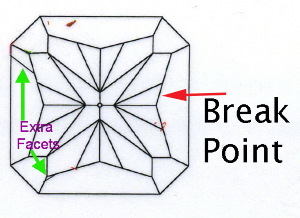- Joined
- Jan 7, 2009
- Messages
- 9,725
thanks all!
ffs- thanks for posting that Aset, and ORC parameters!
Regarding the aset: I would not call that red "uniform" at all.
The red areas at the edge shown are some of the weakest potential points in the execution of the design. Basically they show areas that will be dark in comparison to the greens and white parts which will be bright. On good examples ( and this is probably one) slight tilt lights up the areas depicted in red on the ASET.
A bit about brands, and how they relate to this discussion.
Regarding Original Radiant Cuts: The basis of that particular brand is quite different than most other diamond brands.
The reasons have to do with the versatility of the basic concept, and implementation.
Using AVC, or DBL's Branded Cut for Color Antique style stones as a comparison of differences between brands will be illustrative.
I don't see that others will copy either ours, or the AVC design- for a number of reasons. A patent, or legal reasons will not prevent anyone from trying to copy either design.
What protects these designs are the seller's reputations- and the skill involved in getting those particular results.
Possibly more pressing today is incredible difficulty in obtaining rough.
Henry originally tried to protect his design- but quickly learned that it was going to end up being "open source"
The resultant shared technology means that there's a lot of well cut stones on the market we can use to demonstrate the look I'm talking about.
I will indeed ask Stan for a few stones to use as models- but I'll also find some generic cushions and radiant cuts with the characteristics I'm talking about.
ffs- thanks for posting that Aset, and ORC parameters!
Regarding the aset: I would not call that red "uniform" at all.
The red areas at the edge shown are some of the weakest potential points in the execution of the design. Basically they show areas that will be dark in comparison to the greens and white parts which will be bright. On good examples ( and this is probably one) slight tilt lights up the areas depicted in red on the ASET.
A bit about brands, and how they relate to this discussion.
Regarding Original Radiant Cuts: The basis of that particular brand is quite different than most other diamond brands.
The reasons have to do with the versatility of the basic concept, and implementation.
Using AVC, or DBL's Branded Cut for Color Antique style stones as a comparison of differences between brands will be illustrative.
I don't see that others will copy either ours, or the AVC design- for a number of reasons. A patent, or legal reasons will not prevent anyone from trying to copy either design.
What protects these designs are the seller's reputations- and the skill involved in getting those particular results.
Possibly more pressing today is incredible difficulty in obtaining rough.
Henry originally tried to protect his design- but quickly learned that it was going to end up being "open source"
The resultant shared technology means that there's a lot of well cut stones on the market we can use to demonstrate the look I'm talking about.
I will indeed ask Stan for a few stones to use as models- but I'll also find some generic cushions and radiant cuts with the characteristics I'm talking about.






300x240.png)